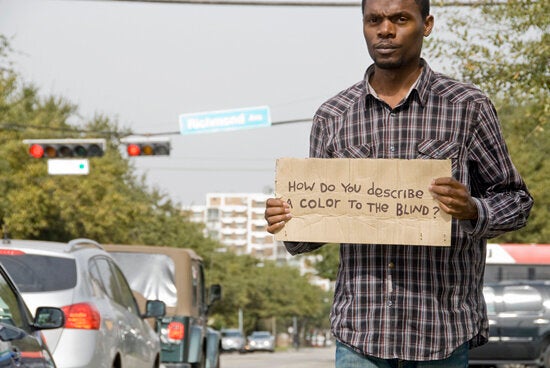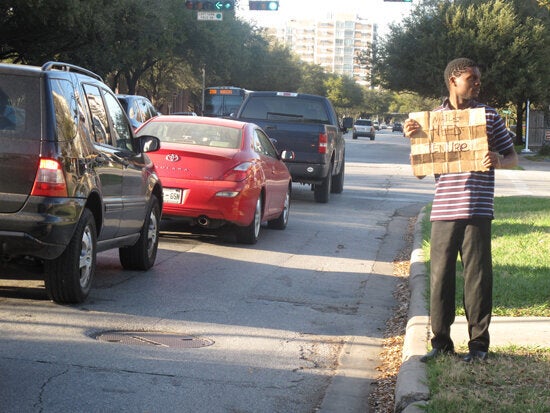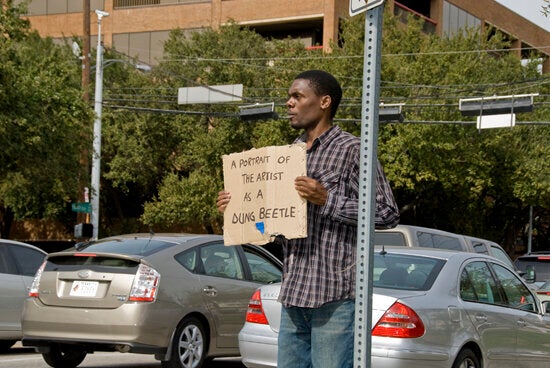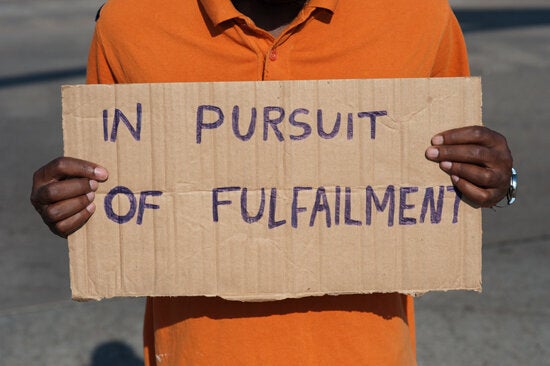
Photo by Miguel Amat
Massa Lemu is an artist from Malawi, who currently lives in Houston, Texas. Houston is built in a swamp; in the summer the temperature can reach in excess of 100 degrees, and humidity 99 percent. Notwithstanding the suffocating climate, one commonly sees young black men holding up torn cardboard signs saying that they will "work for food." Houston is known as the fat capital of the U.S. and the death penalty capital of the U.S., having killed over 500 people (including at least three who are now deemed to have been innocent). It also has one of the highest murder rates, and Texas boasts its own stand-your-ground law known as the Castle Doctrine.

Photo by Lourdes Correa-Carlo
Michelle Garcia in an op-ed piece for the Advocate compares the dodgy legal excuse of "gay panic" (where a heterosexual -- usually male -- claims he went momentarily insane due to unwanted advances by a homosexual, as justification for murder) with "black panic."
"Black panic" is the fear of any young black male (whether wearing a hoodie or not) who may be seen as a deadly threat (even for only eating candy). If you are in one of the majority of U.S. states which have stand-your-ground laws 'black panic' has an additional chilling effect. Which is why I admire Lemu's performance art piece all the more. For his Panhandler series he stood at busy street corners holding a handmade sign placing himself in the line of fire, so to speak, of exhausted, irritated, road-raging, even gun-toting Houstonians (Texas also allows concealed weapons).

Photo by Miguel Amat
Lemu held up signs on the sides of busy roads (often at spots where he had seen others panhandle) that said "Nihilist needs tenure", "A portrait of the artist as a dung beetle", and "How do you describe a color to the blind?" as if he were looking for a cash in hand job, a hot meal, or a hand out. The vast majority of cars whizzed past paying as much attention to him as the non-artists who have little other choice in a state with little or no safety net. How many people in London walk by a homeless person each day turning their glance away? It is a global issue but one Lemu drives elegantly home.
Some motorists did look, smiled and drove on, and a few, not really reading the signs, offered money (which he refused) but due to the huge open roads with so many cars and the noise they generate, talking to motorists was all but impossible. But this was not his intention:
"Explaining was not part of the deal because the work itself plays with communication and meaning. If somebody read it that was enough.
He has said that the "pitiful moments were when people completely shut me out. Those were the moments I felt most invisible" yet that invisibility most likely protected him from much harsher reactions. He says that at the core, his work is concerned with interventions and descriptions of the disputed social space we all live in.

Photo by Logan Beck
Each sign is also an art work in itself. He uses a ball point pen to draw the words as opposed to using a wide marker, and they were recently shown en masse at the EMERGEncy Room gallery at Rice University. One sign that looks at the post-colonial space that he has come from says "In the beginning there was nothing/then it became/a British protectorate", a direct reference to the creation and settlement (1891) of Malawi (known as Nyasaland until 1964) by the Empire. The famous Dr Livingston 'found' lake Malawi (nee Nyasa) in 1859 and some would say it has been all downhill since then. Equally for other Africans who were shipped as slaves to U.S. southern states (like Texas) many of their descendants have also had a hard time "In pursuit of fulfailment".

Photo by Logan Beck
All photos courtesy the artist